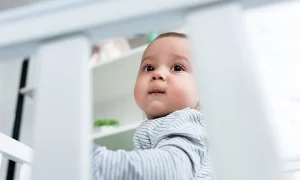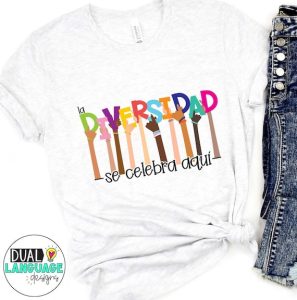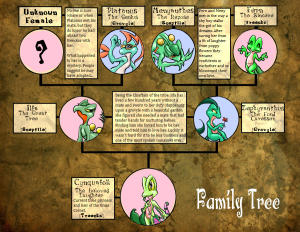Teach kids about the environment by engaging them in outdoor activities and explaining the concept of the environment as the surroundings of Earth. It is crucial to introduce children to environmental concepts to cultivate a sense of responsibility and appreciation for nature in their formative years.
One effective method is to engage them in outdoor activities such as nature walks, gardening, or wildlife observation. It is also valuable to explain the concept of the environment as the physical surroundings of Earth, encompassing living and nonliving elements.
Additionally, practical demonstrations of environmental conservation practices, such as recycling and energy conservation, can instill a sense of responsibility towards their surroundings. By integrating these methods, children can develop a profound connection with nature and learn to value and protect the environment for the future.
Table of Contents
ToggleExplaining The Environment To Kids
When it comes to teaching kids about the environment, it’s important to start with a simple and clear explanation. The environment refers to all the physical surroundings on Earth. It includes everything living and everything nonliving. To break it down for kids, we can explain that the nonliving part of the environment has three main parts: the atmosphere, the hydrosphere, and the lithosphere.
Strongphysical Surroundings On Earth/strong
The physical surroundings on Earth are what make up the environment. This includes everything around us, from the air we breathe to the water we drink and the land we walk on. It’s important for kids to understand that the environment is all around us, and that we are a part of it.
Strongliving And Nonliving Parts/strong
When we talk about the environment, we are referring to both living and nonliving things. Living things include plants, animals, and humans. Nonliving things include rocks, water, air, soil, and more. It’s important for kids to know that both living and nonliving things play a crucial role in maintaining a balanced and healthy environment.
Here’s a table to help kids understand the difference between living and nonliving things:
| Living Things | Nonliving Things |
|---|---|
| Plants | Air |
| Animals | Water |
| Humans | Soil |
By understanding the difference between living and nonliving things, kids can start to appreciate the complexity of the environment and the importance of taking care of it.
Teaching kids about the environment is not only important for their own well-being, but also for the health of the planet. By instilling in them a sense of respect and responsibility towards the environment, we are creating a future generation of environmentally conscious individuals who will strive to preserve and protect our planet.

Credit: www.amazon.com
Importance Of Environmental Education For Kids
Environmental education for kids plays a crucial role in shaping their understanding of the world around them. Instilling environmental awareness and responsibility from a young age empowers children to become future stewards of the planet. By integrating environmental education into their learning experiences, children can develop a deep appreciation for nature, understand the impact of human actions on the environment, and learn to value and conserve natural resources.
Appreciating The Beauty And Importance
By teaching children about the beauty and importance of the environment, they can develop a profound appreciation for the natural world. Through engaging activities and immersive experiences, they can learn to recognize the diverse ecosystems, flora, and fauna that contribute to the beauty of the environment. This fosters a deep sense of wonder and admiration for nature, encouraging children to cherish and protect the environment.
Developing A Connection To Nature
Encouraging children to develop a strong connection to nature fosters a sense of responsibility and care for the environment. By immersing them in outdoor activities, such as nature walks, gardening, and wildlife observations, children can forge a personal bond with the natural world. This connection nurtures a deeper understanding of the delicate balance within ecosystems and instills a sense of environmental stewardship from an early age.
Valuing And Preserving Resources
Through environmental education, children learn to value and preserve natural resources, understanding the importance of sustainability and conservation. By teaching them about recycling, energy efficiency, and the finite nature of resources, children can comprehend the significance of preserving the environment for future generations. This instills a sense of responsibility and empowers them to take proactive measures to protect the planet.
Teaching Kids To Respect The Environment
One effective way to teach kids about respecting the environment is by modeling environmentally friendly behaviors yourself.
Engage kids by involving them in hands-on experiences, such as planting a garden or participating in a beach cleanup.
Fun Activities To Teach Kids About The Environment
Introducing fun activities is a great way to teach kids about the environment. By engaging in interactive and enjoyable experiences, children can develop a deep understanding and appreciation for nature. Here are some fun activities that can help educate kids about the environment while having a great time.
Nature Bingo And Scavenger Hunts
Nature bingo and scavenger hunts are exciting games that encourage children to explore the natural world around them. They can learn about different plants, animals, and natural features while searching for specific items on their bingo card or scavenger hunt list. This activity promotes observation skills and helps kids develop an appreciation for the diversity of the environment.
Art Projects With Natural Materials
Art projects using natural materials can spark creativity and foster an understanding of the environment. Kids can collect leaves, twigs, and flowers during outdoor walks and use them to create unique art pieces. From leaf rubbings to nature collages, these projects allow children to express themselves while connecting with nature in a meaningful way.
Fun Science Experiments
Science experiments bring a sense of wonder and excitement to learning about the environment. Kids can perform simple experiments like creating a mini water cycle or observing the effects of pollution on plants. These hands-on activities enable children to understand scientific concepts while developing an awareness of the impact of human actions on the environment.
Gardening Together
Gardening is an excellent activity for teaching kids about the environment and promoting sustainability. Children can learn about plant life cycles, soil health, and the importance of water conservation. They can also experience the joy of growing their own food and understand the significance of eating locally and seasonally.
Camping And Outdoor Exploration
Camping and outdoor exploration provide opportunities for kids to immerse themselves in nature. Whether it’s camping in the backyard or going on a hike, children can learn about ecosystems, animal habitats, and the importance of preserving natural spaces. Being in nature allows kids to develop a sense of awe and respect for the environment.
Learning About Animals
Teaching kids about animals is a fun and engaging way to introduce them to the intricacies of the environment. Children can learn about different species, their habitats, and the importance of biodiversity. They can explore animal-themed books, visit wildlife sanctuaries, or watch nature documentaries to expand their knowledge and appreciation for the natural world.
Teaching Actionable Steps For The Environment
It’s crucial to teach kids actionable steps they can take to protect and conserve the environment. Whether it’s recycling, reducing waste, or conserving energy, children can learn simple but impactful actions they can incorporate into their daily lives. These practical lessons empower kids to become environmental stewards and make a positive difference in the world around them.
Environmental Education Resources For Kids
Teaching kids to care for the environment is crucial for creating a sustainable future. With the right resources, educators and parents can instill the values of environmental stewardship in children. Here are some valuable resources to aid in teaching kids about environmental education:
Learning And Teaching Programs
Interactive programs that engage kids in learning about the environment in a fun and educational way. These programs cover a variety of topics, including climate change, renewable energy, and biodiversity conservation.
Lesson Plans And Teacher Guides
Comprehensive lesson plans and teacher guides designed to assist educators in delivering impactful environmental education curricula. These resources provide structured activities and discussions to enhance children’s understanding of environmental issues.
Games, Quizzes, And Videos
Engaging games, quizzes, and videos that make learning about the environment enjoyable for kids. These interactive resources aid in reinforcing the concepts taught in the classroom and encourage active participation in environmental learning.

Credit: rejoiceschool.com
Incorporating Environmental Education In Everyday Life
Teaching kids about the environment is crucial for their future and the well-being of our planet. And the best way to do that is by incorporating environmental education in their everyday lives. By immersing them in activities and experiences that promote an understanding and appreciation for nature, we can instill a sense of responsibility and inspire them to become stewards of the environment.
Bedtime Stories With Environmental Themes
Bedtime stories are a wonderful way to not only bond with your children but also engage their imagination and teach them valuable lessons about the environment. Choose books with environmental themes, such as “The Lorax” by Dr. Seuss or “The Giving Tree” by Shel Silverstein. These stories will introduce your kids to concepts like conservation, sustainability, and the impact of human actions on nature.
Field Trips To Natural Areas
Taking your kids on field trips to natural areas is an excellent way to foster a love for the environment and provide them with hands-on learning experiences. Visit local parks, nature reserves, or wildlife sanctuaries where they can observe and learn about different ecosystems, plants, and animals. Encourage them to ask questions, take notes, and appreciate the beauty and fragility of the natural world.
Outdoor Adventures And Exploration
There is no better way to teach kids about the environment than by letting them explore it firsthand. Plan outdoor adventures like hiking, camping, or biking trips where they can discover the wonders of nature. Teach them about Leave No Trace principles, like packing out their trash and respecting wildlife habitats. Let them see the value of nature through their own experiences, and they will develop a lifelong appreciation for the environment.

Credit: www.facebook.com
Frequently Asked Questions Of Teach Kids About The Environment
How Do You Explain The Word Environment To A Child?
The environment includes living and nonliving things like air, water, and land. Kids can learn by exploring outdoors.
How Do Children Learn About Their Environment?
Children learn about their environment by exploring outdoors, observing plants, animals, and issues like pollution and recycling.
Why Is It Important To Educate Kids About The Environment?
It’s crucial to educate kids about the environment to foster a sense of responsibility and appreciation for nature. By teaching them about the environment, they develop a lifelong connection to the natural world and understand the importance of preserving its resources.
This empowers them to make environmentally conscious decisions.
How Do You Teach Children To Respect The Environment?
To teach children to respect the environment, lead by example and educate them on sustainable practices. Involve them in activities like recycling and conserving water. Explain the importance of taking care of the environment and encourage their participation. Engage in outdoor activities and teach them about nature and animals.
Conclusion
Teaching children about the environment is essential for their future. By instilling in them the values of conservation and sustainability, we empower the next generation to protect our planet. Through engaging activities and education, children can become environmentally conscious individuals, making a positive impact on the world around them.
Encouraging kids to respect and care for the environment is an investment in a greener, healthier future.

Mother of Two children. I’m a former teacher with a background in child development and a passion for Good parenting. I understand child development and know how to develop activities to help children learn and grow. Spare time, I enjoy spending time with my family, reading, and volunteering in my community. Read More







